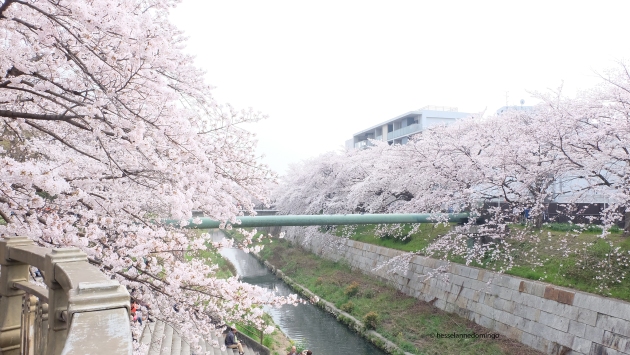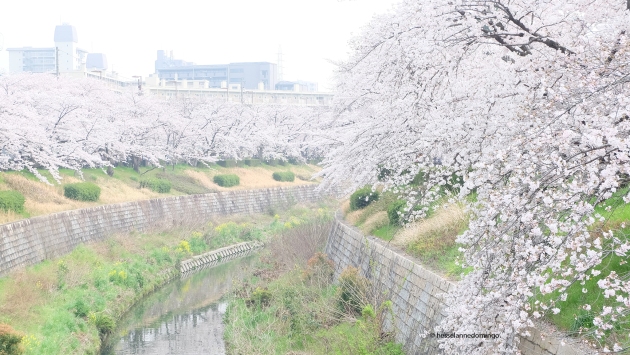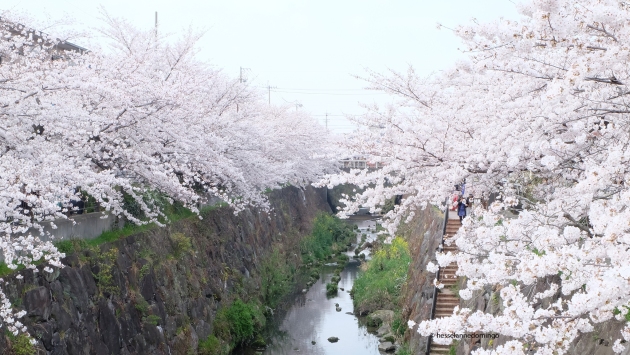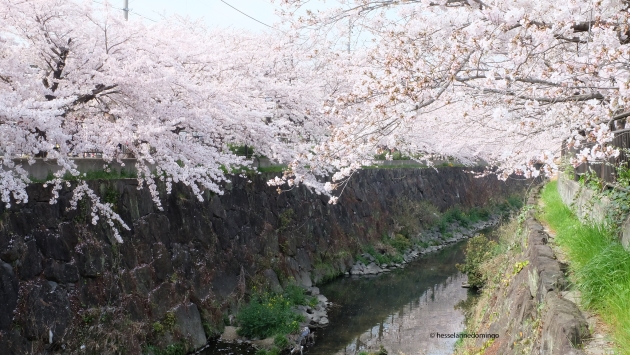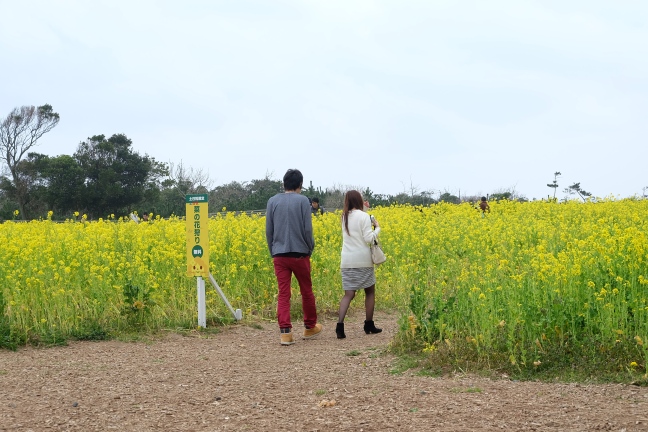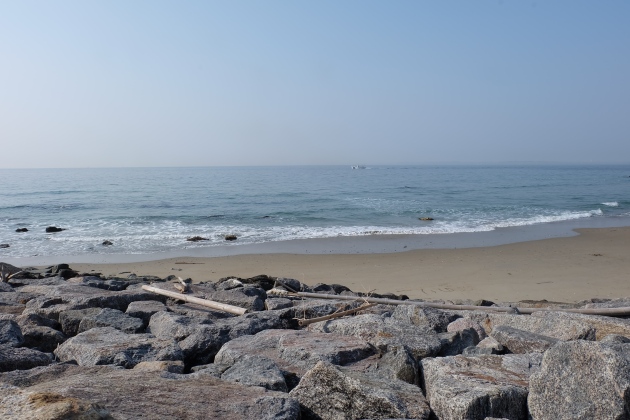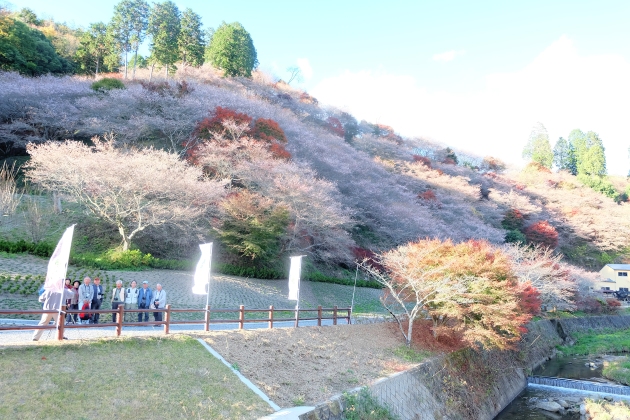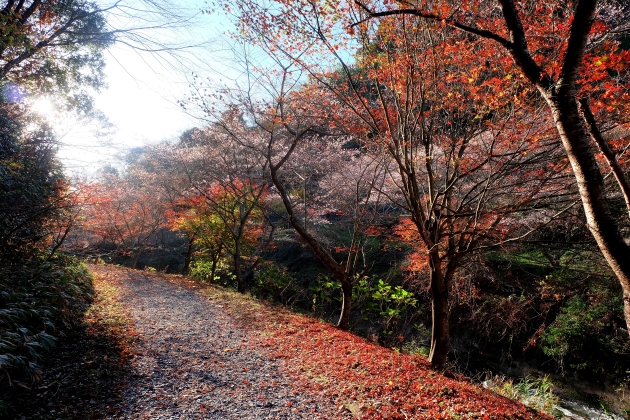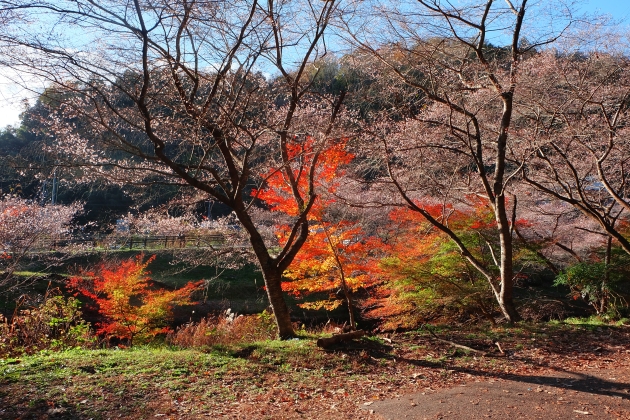I love the different flowers that grow in Japan every spring. They don’t exist in my tropical country. More than that, there’s always a wide area or field where you get to see a bunch of those flowering plants. To mark the start of the season, ‘ume’ or plum blossom is probably the first type of spring flower that you can see blooming. And for me, it means it’s time to visit a garden or a flower field again. Well, who wouldn’t get excited after the long cold dark winter? For this flower viewing, I opted to see the weeping plum blossoms at the Nagoya Agricultural Center.
To avoid the crowd, I woke up early but not early enough to make it in time for the train schedule I was aiming for. So, I took a taxi to the nearest station in my city which costed me around 1,000 yen. After that, I was off to Hirabari station which was the nearest station to the Nagoya Agricultural Center. From there, you can walk for 18 minutes to the area. I decided to take the bus. I believed it was the right bus because a bus driver pointed me to that particular bus stop when I inquired. I usually make sure I got my transportation info right, but it’s been a few months since I traveled. My planning skills must have gone rusty. While aboard the bus, I kept checking my distance to the Agricultural Center through Google map but I seemed to be getting farther. The walking distance extended to almost an hour. I decided to get off and rode another bus back to where I came from. Unfortunately, I took another wrong bus. I wasted two hours riding multiple wrong buses when I could have just walked to the area for 18 minutes. I got so frustrated because my encounter as a lost person was not positive. The first person to whom I sought help was not helpful and I didn’t think he was trying to understand me. The second one was kind and his information led me to a turning point! He pointed me to the bus station where I was supposed to ride. I was thankful that the bus driver was nice. He even called me out when the bus reached the bus station where I needed to ride another bus. It was exhausting being in the wrong places!
My spirit was already down when I returned to Hirabari Station. But I wanted to try again given that I already traveled far from my place just to see the flowers. So I went to the same bus stop again. But this time there was a station employee guiding local tourists who wanted to see the plum blossoms. I guess I must have arrived way early awhile ago. I found out the first trip to the Center was after 9 am. I arrived some time 8:30. The queue was now long but I patiently waited because I was pretty sure that I’d be getting on the right bus with the other tourists headed to the same place. The trip took 10 minutes. There were already a lot of people in the Agricultural Center. Well, it was almost noon. The taxi ride that I took from home just so I could wander around with less crowd was all for nothing. Well, not entirely. I managed to take a few good pictures. The place was filled with weeping plum blossom trees. There were families who had set-up their blankets on the ground to have a picnic. Different food stalls were scattered selling traditional Japanese sweets, fruits and vegetables, and other international food like Tacos and American burgers. Probably my biggest regret in that place was buying lemonade for 400 yen. Quite expensive, don’t you think? Or does lemon cost that much now?
So if ever you get into a situation wherein you’re not sure of the bus you have to take, better go on foot instead if it’s just within reach in a matter of 30 minutes. You’ll lose more time and money wandering around in the wrong places.







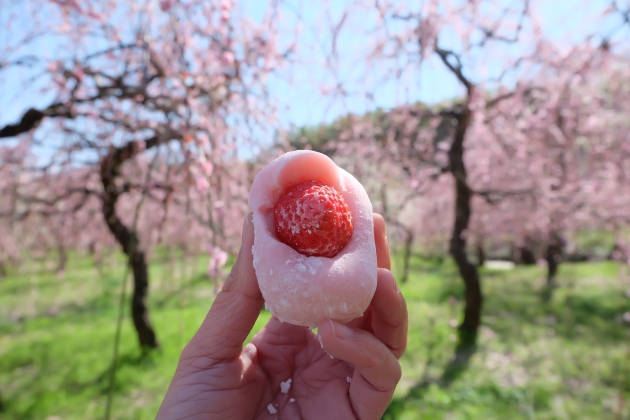
How To Go There:
The nearest station is Hirabari station. If you are coming from Nagoya, take the Nagoya City Subway Higashiyama Line for FUJIGAOKA and get off at Fushimi (Aichi). It takes 3 minutes. From Fushimi (Aichi) station, ride the Nagoya City Subway Tsurumai Line for AKAIKE and get off at Hirabari Station. It takes 22 minutes. The total cost is 300 yen. If you go to the Nagoya Agricultural Center during the plum blossom season, there’s actually a specific schedule that they post at the bus stop. And usually, there’s a station staff near the bus stop to guide the influx of tourists. But if you’re way too early like before 9 am, they may not be there, yet. The bus stop going to the place is the bus stop farther away, not the one near the station exit. If you decide to walk, it’ll take 18 minutes according to Google Map. Here’s the address: Nagoya Agricultural Center, 平針黒石-2872番地-3 天白町 Tenpaku Ward, Nagoya, Aichi Prefecture 468-0021. Also, make sure to check when the flowers are in bloom. This year, I went in the middle of March and they were just perfect.


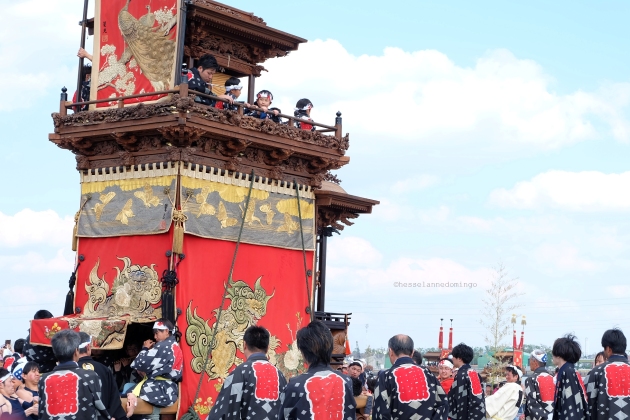


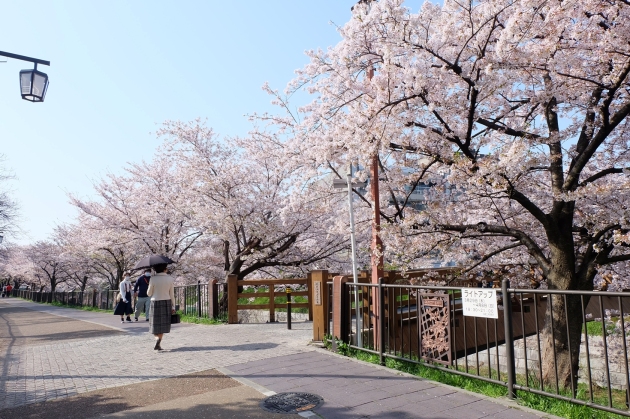
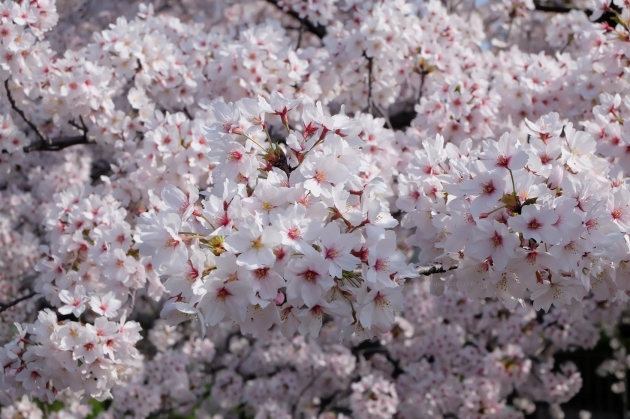
















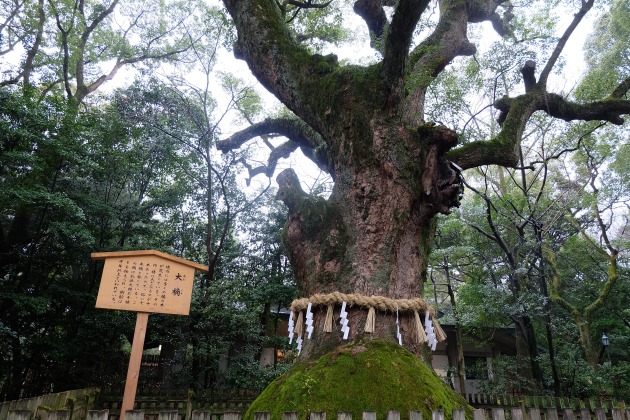




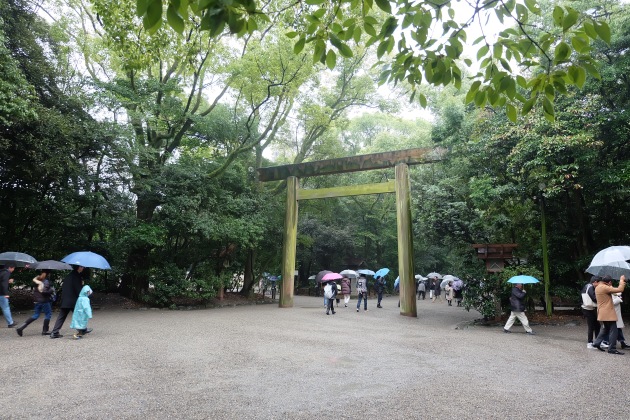
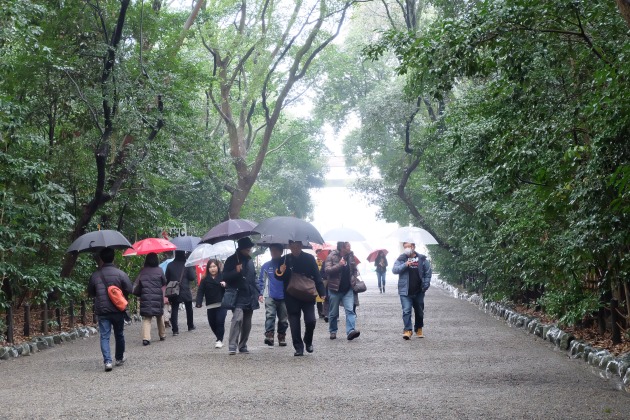


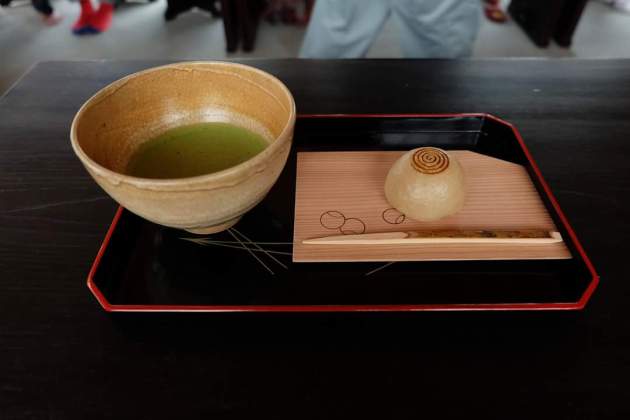




 Mandaraji Park is one of the nearest places in my area to see the wisteria. This park can be found in Konan City in Aichi Prefecture. I had a very smooth travel going to Konan Station. If you’re coming from Nagoya, it takes less than 30 minutes by train via Meitetsu Inuyama Line. By the time I exited the station, I saw someone holding a placard informing the travelers where they could ride the bus going to Mandaraji Park. I really found it very helpful as I didn’t know in which bus stop I was supposed to go to.
Mandaraji Park is one of the nearest places in my area to see the wisteria. This park can be found in Konan City in Aichi Prefecture. I had a very smooth travel going to Konan Station. If you’re coming from Nagoya, it takes less than 30 minutes by train via Meitetsu Inuyama Line. By the time I exited the station, I saw someone holding a placard informing the travelers where they could ride the bus going to Mandaraji Park. I really found it very helpful as I didn’t know in which bus stop I was supposed to go to.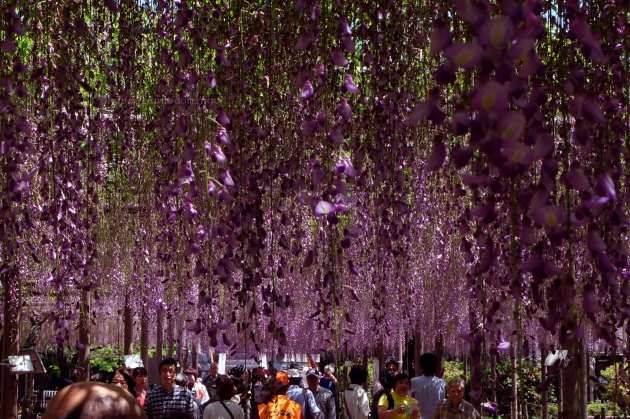 I went to Mandaraji Park on May 4th which is actually Midori no Hi or Greenery Day in Japan. It is a day to appreciate mother nature. Thus, I found it befitting to see the blooming wisteria on that particular holiday. It was sunny but I didn’t feel sweaty at all because the wisteria vines kept me under the shade. Plus, the beauty of nature really has a way to keep one in a good mood.
I went to Mandaraji Park on May 4th which is actually Midori no Hi or Greenery Day in Japan. It is a day to appreciate mother nature. Thus, I found it befitting to see the blooming wisteria on that particular holiday. It was sunny but I didn’t feel sweaty at all because the wisteria vines kept me under the shade. Plus, the beauty of nature really has a way to keep one in a good mood. Actually, I’ve only come to appreciate spring this time around because I was more of an autumn person. But after being stuck in cold weather for many months, I find myself longing for the warmth of the spring season. The presence of flowers in the front yard of the houses I pass allows my mind to destress even for just a moment. Truly, colors and flowers have a positive effect on a person’s emotional state. Until now, it amazes me to see these beautiful flowers just within my reach because not all people are lucky enough to see so much of nature in the place where they live.
Actually, I’ve only come to appreciate spring this time around because I was more of an autumn person. But after being stuck in cold weather for many months, I find myself longing for the warmth of the spring season. The presence of flowers in the front yard of the houses I pass allows my mind to destress even for just a moment. Truly, colors and flowers have a positive effect on a person’s emotional state. Until now, it amazes me to see these beautiful flowers just within my reach because not all people are lucky enough to see so much of nature in the place where they live. There is just something ethereal walking through a place with hanging bluish-purple wisteria vines. I feel like I am in a fairytale world. Actually, Mandaraji Park isn’t the place where I really wanted to go to see the wisteria. My dream destination is the Wisteria flower tunnel at Kawachi Fuji Garden in Fukuoka. Since I ran out of budget to go to Kyushu Island, I decided to just enjoy the wisteria in Aichi Prefecture.
There is just something ethereal walking through a place with hanging bluish-purple wisteria vines. I feel like I am in a fairytale world. Actually, Mandaraji Park isn’t the place where I really wanted to go to see the wisteria. My dream destination is the Wisteria flower tunnel at Kawachi Fuji Garden in Fukuoka. Since I ran out of budget to go to Kyushu Island, I decided to just enjoy the wisteria in Aichi Prefecture. What I appreciate most in Japan is that even disabled people get to enjoy nature. I spotted one or two people in wheelchairs. It’s always a family affair whenever Japanese people go sightseeing. I really appreciate how this country makes it easy for everyone to access the local tourist spots.
What I appreciate most in Japan is that even disabled people get to enjoy nature. I spotted one or two people in wheelchairs. It’s always a family affair whenever Japanese people go sightseeing. I really appreciate how this country makes it easy for everyone to access the local tourist spots.
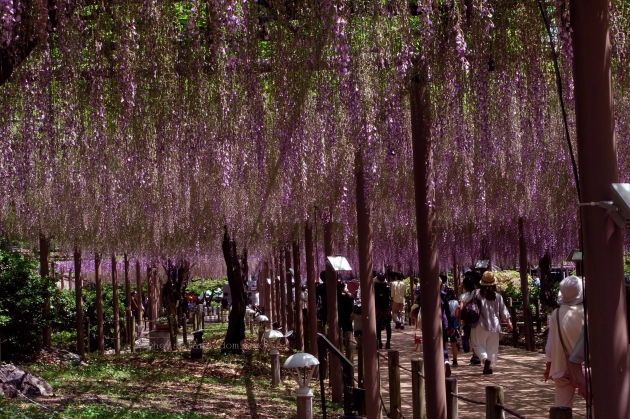


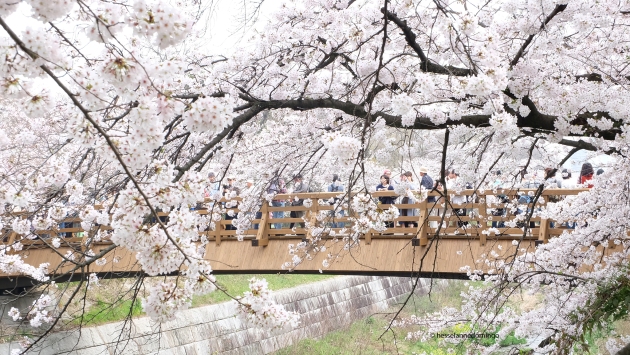 “This weekend is the best time to see the cherry blossoms,” mentioned the woman I work with. It might be true but I wasn’t planning to have my hanami on said weekend because I had a dental appointment. Come Saturday, I was patiently waiting for my teeth to be examined when the dentist assistant engaged me in a chitchat. “Today is the best time to see the cherry blossoms,” she said cheerfully. Two Japanese women randomly telling me that that Saturday was the perfect time to see the cherry blossoms made me decide to finally go to Yamizakigawa River: the best viewing spot in Aichi prefecture.
“This weekend is the best time to see the cherry blossoms,” mentioned the woman I work with. It might be true but I wasn’t planning to have my hanami on said weekend because I had a dental appointment. Come Saturday, I was patiently waiting for my teeth to be examined when the dentist assistant engaged me in a chitchat. “Today is the best time to see the cherry blossoms,” she said cheerfully. Two Japanese women randomly telling me that that Saturday was the perfect time to see the cherry blossoms made me decide to finally go to Yamizakigawa River: the best viewing spot in Aichi prefecture.




